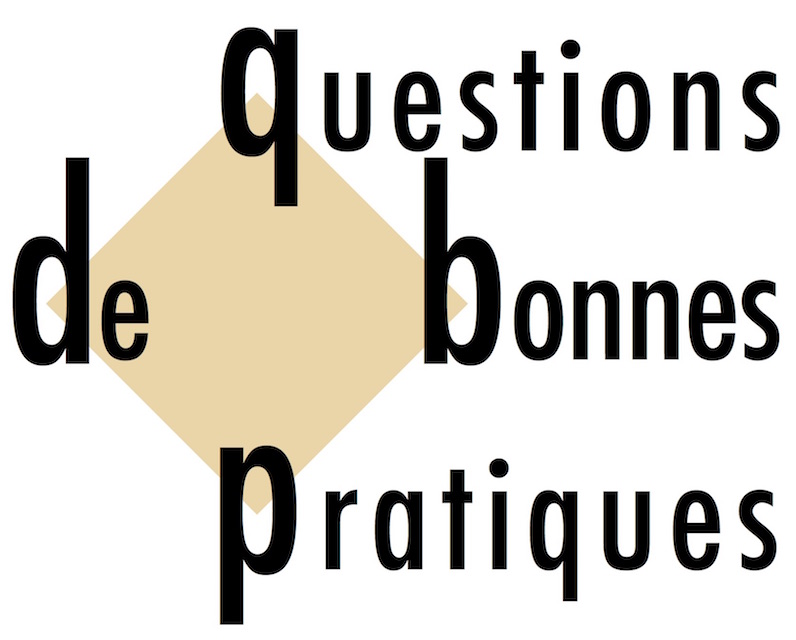Lien vers la table des matières de la bibliographie thématique, composée de documents réunis par un Groupe de travail constitué dans la perspective de préciser les spécificités de l'approche clinique de l'Antenne 110 par rapport aux "Evidence-Based Practices" : CLIQUER ICI.
Allen, A., & Cowan, C. (2008). Naturalistic teaching procedures. In J. K. Luiselli, D. C. Russo, W. P. Christian, & S. M. Wilczynski (Eds.), Effective practices for children with autism (pp. 213-240). Oxford University Press.
Baker, M. J. (2000). Incorporating the thematic ritualistic behaviors of children with autism into games increasing social play interactions with siblings. Journal of Positive Behavior Interventions, 2(2), 66-84. http://dx.doi.org/10.1177/109830070000200201
Baker, M. J., Koegel, R. L., & Koegel, L. K. (1998). Increasing the social behavior of young children with autism using their obsessive behaviors. Research and Practice for Persons with Severe Disabilities, 23(4), 300-308. http://dx.doi.org/10.2511/rpsd.23.4.300
Bernard-Opitz, V., Ing, S., & Kong, T. Y. (2004). Comparison of behavioural and natural play interventions for young children with autism. Autism, 8(3), 319-333. http://dx.doi.org/10.1177/1362361304045212
Boyd, B. A., Alter, P. J., & Conroy, M. A. (2005). Using their restricted interests: A novel strategy for increasing the social behaviors of children with autism. Beyond Behavior, 15(2), 3-9.
Boyd, B. A., Conroy, M. A., Mancil, G. R., Nakao, T., & Alter, P. J. (2007). Effects of circumscribed interests on the social behaviors of children with autism spectrum disorders. J Autism Dev Disord, 37(8), 1550-61. http://dx.doi.org/10.1007/s10803-006-0286-8
Charlop, M. H. (1983). The effects of echolalia on acquisition and generalization of receptive labeling in autistic children. Journal of Applied Behavior Analysis, 16(1), 111-126.
Charlop-Christy, M. H., & Carpenter, M. H. (2000). Modified incidental teaching sessions a procedure for parents to increase spontaneous speech in their children with autism. Journal of Positive Behavior Interventions, 2(2), 98-112. http://dx.doi.org/10.1177/109830070000200203
Charlop-Christy, M. H., LeBlanc, L. A., & Carpenter, M. H. (1999). Naturalistic teaching strategies (NATS) to teach speech to children with autism: Historical perspective, development, and current practice. The California School Psychologist, 4(1), 30-46. http://dx.doi.org/10.1007/BF03340868
Cowan, R. J., & Allen, K. D. (2007). Using naturalistic procedures to enhance learning in individuals with autism: A focus on generalized teaching within the school setting. Psychology in the Schools, 44(7), 701-715. http://dx.doi.org/10.1002/pits.20259
Delprato, D. J. (2001). Comparisons of discrete-trial and normalized behavioral language intervention for young children with autism. J Autism Dev Disord, 31(3), 315-325. http://dx.doi.org/10.1023/A:1010747303957
Dufek, S., & Schreibman, L. (2014). Natural environment training. In J. Tarbox, D. R. Dixon, P. Sturmey, & J. L. Matson (Eds.), Handbook of early intervention for autism spectrum disorders (pp. 325-344). Springer New York. http://dx.doi.org/10.1007/978-1-4939-0401-3_13
Dunst, C. J., Bruder, M. B., Trivette, C. M., Hamby, D., Raab, M., & McLean, M. (2001). Characteristics and consequences of everyday natural learning opportunities. Topics in Early Childhood Special Education, 21(2), 68-92. http://dx.doi.org/10.1177/027112140102100202
Dunst, C. J., Trivette, C. M., & Hamby, D. W. (2012). Meta-analysis of studies incorporating the interests of young children with autism spectrum disorders into early intervention practices. Autism Research and Treatment, 2012, 462531. http://dx.doi.org/10.1155/2012/462531
Dunst, C. J., Trivette, C. M., & Masiello, T. (2011). Exploratory investigation of the effects of interest-based learning on the development of young children with autism. Autism, 15(3), 295-305. http://dx.doi.org/10.1177/1362361310370971
El Zein, F., Solis, M., Lang, R., & Kim, M. K. (2014). Embedding perseverative interest of a child with autism in text may result in improved reading comprehension: A pilot study. Developmental Neurorehabilitation, 1-5. http://dx.doi.org/10.3109/17518423.2014.915893
Franzone, E. (2009). Overview of naturalistic intervention. National Professional Development Center on Autism Spectrum Disorders.
Garcia-Villamisar, D. A., & Dattilo, J. (2010). Effects of a leisure programme on quality of life and stress of individuals with ASD. J Intellect Disabil Res, 54(7), 611-9. http://dx.doi.org/10.1111/j.1365-2788.2010.01289.x
Hancock, T., & Kaiser, A. (2006). Enhanced milieu teaching. In Treatment of language disorders in children (1 edition ed., pp. 203-236). Baltimore, Md: Brookes Publishing.
Hancock, T. B., & Kaiser, A. P. (2002). The effects of trainer-implemented enhanced milieu teaching on the social communication of children with autism. Topics in Early Childhood Special Education, 22(1), 39-54. http://dx.doi.org/10.1177/027112140202200104
Hinton, L. M., & Kern, L. (1999). Increasing homework completion by incorporating student interests. Journal of Positive Behavior Interventions, 1(4), 231-241. http://dx.doi.org/10.1177/109830079900100405
Ingersoll, B. (2010). The differential effect of three naturalistic language interventions on language use in children with autism. Journal of Positive Behavior Interventions, 13(2), 109-118. http://dx.doi.org/10.1177/1098300710384507
Ingersoll, B., Dvortcsak, A., Whalen, C., & Sikora, D. (2005). The effects of a developmental, social—pragmatic language intervention on rate of expressive language production in young children with autistic spectrum disorders. Focus on Autism and Other Developmental Disabilities, 20(4), 213-222. http://dx.doi.org/10.1177/10883576050200040301
Ingersoll, B., Lewis, E., & Kroman, E. (2007). Teaching the imitation and spontaneous use of descriptive gestures in young children with autism using a naturalistic behavioral intervention. J Autism Dev Disord, 37(8), 1446-1456. http://dx.doi.org/10.1007/s10803-006-0221-z
Ingersoll, B. R. (2010). Teaching social communication a comparison of naturalistic behavioral and development, social pragmatic approaches for children with autism spectrum disorders. Journal of Positive Behavior Interventions, 12(1), 33-43.
Kaale, A., Smith, L., & Sponheim, E. (2012). A randomized controlled trial of preschool-based joint attention intervention for children with autism. Journal of Child Psychology and Psychiatry, 53(1), 97-105. http://dx.doi.org/10.1111/j.1469-7610.2011.02450.x
Kaiser, A. P., & Roberts, M. Y. (2013). Parent-implemented enhanced milieu teaching with preschool children who have intellectual disabilities. Journal of Speech, Language, and Hearing Research : JSLHR, 56(1), 295-309. http://dx.doi.org/10.1044/1092-4388(2012/11-0231)
Koegel, L. K., Carter, C. M., & Koegel, R. L. (2003). Teaching children with autism self-initiations as a pivotal response. Topics in Language Disorders, 23(2), 134-145.
Koegel, L. K., Singh, A. K., & Koegel, R. L. (2010). Improving motivation for academics in children with autism. J Autism Dev Disord, 40(9), 1057-66. http://dx.doi.org/10.1007/s10803-010-0962-6
Koegel, L. K., Vernon, T. W., Koegel, R. L., Koegel, B. L., & Paullin, A. W. (2012). Improving social engagement and initiations between children with autism spectrum disorder and their peers in inclusive settings. Journal of Positive Behavior Interventions, 14(4), 220-227.
Koegel, R., Kim, S., Koegel, L., & Schwartzman, B. (2013). Improving socialization for high school students with ASD by using their preferred interests. Journal of Autism and Developmental Disorders, 43(9), 2121-34. http://dx.doi.org/10.1007/s10803-013-1765-3
Koegel, R. L., Bimbela, A., & Schreibman, L. (1996). Collateral effects of parent training on family interactions. J Autism Dev Disord, 26(3), 347-59.
Koegel, R. L., Camarata, S., Koegel, L. K., Ben-Tall, A., & Smith, A. E. (1998). Increasing speech intelligibility in children with autism. J Autism Dev Disord, 28(3), 241-251.
Koegel, R. L., Dyer, K., & Bell, L. K. (1987). The influence of child-preferred activities on autistic children's social behavior. Journal of Applied Behavior Analysis, 20(3), 243-252. http://dx.doi.org/10.1901/jaba.1987.20-243
Koegel, R. L., Fredeen, R., Kim, S., Danial, J., Rubinstein, D., & Koegel, L. (2012). Using perseverative interests to improve interactions between adolescents with autism and their typical peers in school settings. Journal of Positive Behavior Interventions, 14(3), 133-141.
Koegel, R. L., Koegel, L. K., & Surratt, A. (1992). Language intervention and disruptive behavior in preschool children with autism. J Autism Dev Disord, 22(2), 141-153.
Koegel, R. L., O'Dell, M. C., & Koegel, L. K. (1987). A natural language teaching paradigm for nonverbal autistic children. J Autism Dev Disord, 17(2), 187-200.
Kohler, F. W., Anthony, L. J., Steighner, S. A., & Hoyson, M. (2001). Teaching social interaction skills in the integrated preschool an examination of naturalistic tactics. Topics in Early Childhood Special Education, 21(2), 93-103. http://dx.doi.org/10.1177/027112140102100203
Kryzak, L. A., Bauer, S., Jones, E. A., & Sturmey, P. (2013). Increasing responding to others' joint attention directives using circumscribed interests. Journal of Applied Behavior Analysis, 46(3), 674-9. http://dx.doi.org/10.1002/jaba.73
Lanou, A., Hough, L., & Powell, E. (2012). Case studies on using strengths and interests to address the needs of students with autism spectrum disorders. Intervention in School and Clinic, 47(3), 175-182. http://dx.doi.org/10.1177/1053451211423819
Mancil, G. R., & Pearl, C. E. (2008). Restricted interests as motivators: Improving academic engagement and outcomes of children on the autism spectrum. TEACHING Exceptional Children Plus, 4(6), pp. 2-15.
Manning, A. L., & Katz, K. B. (1989). Language-Learning patterns in echolalic children. Child Language Teaching and Therapy, 5(3), 249-261.
McGee, G. G., & Daly, T. (2007). Incidental teaching of age-appropriate social phrases to children with autism. Research and Practice for Persons with Severe Disabilities (RPSD), 32(2), 112-123.
McGee, G. G., Krantz, P. J., & McClannahan, L. E. (1985). The facilitative effects of incidental teaching on preposition use by autistic children. Journal of Applied Behavior Analysis, 18(1), 17-31. http://dx.doi.org/10.1901/jaba.1985.18-17
McGee, G. G., Krantz, P. J., Mason, D., & McClannahan, L. E. (1983). A modified incidental-teaching procedure for autistic youth: Acquisition and generalization of receptive object labels. Journal of Applied Behavior Analysis, 16(3), 329-338. http://dx.doi.org/10.1901/jaba.1983.16-329
Mineau, S., & Mottron, L. (1998). Intervention thérapeuthique utilisant les intérêts particuliers chez un enfant autiste avec agnosie visuelle : Autisme [therapeutic intervention using the particular interest of an autistic child with visual agnosia : A case study]. Santé Mentale Au Québec, 23(1), 67-84.
Morris, R., Kirschbaum, C., & Picard, R. (2010). Broadening accessibility through special interests: A new approach for software customization. In
Naoi, N. (2009). Intervention and treatment methods for children with autism spectrum disorders. In J. L. Matson (Ed.), Applied behavior analysis for children with autism spectrum disorders (pp. 67-81). Springer. http://dx.doi.org/10.1007/978-1-4419-0088-3_2
Neef, N. A., Walters, J., & Egel, A. L. (1984). Establishing generative yes/no responses in developmentally disabled children. Journal of Applied Behavior Analysis, 17(4), 453-460. http://dx.doi.org/10.1901/jaba.1984.17-453
Olive, M. L., de la Cruz, B., Davis, T. N., Chan, J. M., Lang, R. B., O'Reilly, M. F., & Dickson, S. M. (2007). The effects of enhanced milieu teaching and a voice output communication aid on the requesting of three children with autism. J Autism Dev Disord, 37(8), 1505-1513. http://dx.doi.org/10.1007/s10803-006-0243-6
Peterson, P. (2004). Naturalistic language teaching procedures for children at risk for language delays. Behavior Analyst Today, 5(4).
Porter, N. (2012). Promotion of pretend play for children with high-functioning autism through the use of circumscribed interests. Early Childhood Education Journal, 40(3), 161-167. http://dx.doi.org/10.1007/s10643-012-0505-1
Seiverling, L., Pantelides, M., Ruiz, H. H., & Sturmey, P. (2010). The effect of behavioral skills training with general-case training on staff chaining of child vocalizations within natural language paradigm. Behavioral Interventions, 25(1), 53-75. http://dx.doi.org/10.1002/bin.293
Stahmer, A. C., Ingersoll, B., & Carter, C. (2003). Behavioral approaches to promoting play. Autism, 7(4), 401-413.
Stocco, C. S., Thompson, R. H., & Rodriguez, N. M. (2011). Restricted interests and teacher presentation of items. Journal of Applied Behavior Analysis, 44(3), 499-512.
Sundberg, M. L., & Partington, J. W. (1999). The need for both discrete trial training and natural environment language training for children with autism. In P. Ghezzi, W. L. Williams, & J. E. Carr (Eds.), Autism: Behavior analytic perspectives (pp. 139-156). Context Press.
Trivette, C. M., & Dunst, C. J. (2011). Consequences of interest-based learning on the social-affective behavior of young children with autism. Life Span and Disability, 14(2), 101-110.
Vacca, J. J. (2007). Incorporating interests and structure to improve participation of a child with autism in a standardized assessment. A case study analysis. Focus on Autism and Other Developmental Disabilities, 22(1), 51-59. http://dx.doi.org/10.1177/10883576070220010601
Vismara, L. A., & Lyons, G. L. (2007). Using perseverative interests to elicit joint attention behaviors in young children with autism theoretical and clinical implications for understanding motivation. Journal of Positive Behavior Interventions, 9(4), 214-228. http://dx.doi.org/10.1177/10983007070090040401
Watkins, N., & Rapp, J. T. (2014). Environmental enrichment and response cost: Immediate and subsequent effects on stereotypy. Journal of Applied Behavior Analysis, 47(1), 186-91. http://dx.doi.org/10.1002/jaba.97
Whalen, C., & Schreibman, L. (2003). Joint attention training for children with autism using behavior modification procedures. J Child Psychol Psychiatry, 44(3), 456-468.
Wong, C. S., Kasari, C., Freeman, S., & Paparella, T. (2007). The acquisition and generalization of joint attention and symbolic play skills in young children with autism. Research & Practice for Persons with Severe Disabilities, 32(2), 101-109.
Yapko, D. (2010). Do you see the forest or the tree? Utilizing client interests and strengths in a case of asperger's syndrome. In Happiness, healing, enhancement: Your casebook collection for applying positive psychology in therapy (pp. 113-123). John Wiley & Sons Inc, Hoboken, NJ.



